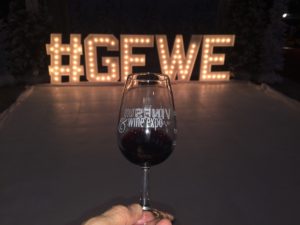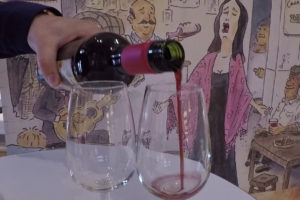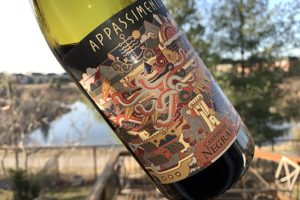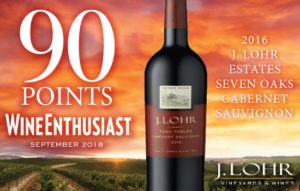 The best drunks are wine drunks. They’re typically either happy or sleepy. Occasionally inappropriate. But rarely obnoxious. You will find many of these people midway through a consumer wine show. And if you’re lucky enough to live near Toronto, there’s a magnum of such events, including: the Taste of Oregon, Wines of Portugal, Wines of Greece, Flavours of New Zealand and Ontario’s County in the City and Somewhereness in the spring; the sprawling Descorchados South American Wine Tasting in the summer; and the Chilean Wine Festival at the Royal Ontario Museum and the four-day Gourmet Food & Wine Expo at the Metro Convention Centre in November. But nothing kicks off the wine tasting season quite like the annual California Wine Fair each April.
The best drunks are wine drunks. They’re typically either happy or sleepy. Occasionally inappropriate. But rarely obnoxious. You will find many of these people midway through a consumer wine show. And if you’re lucky enough to live near Toronto, there’s a magnum of such events, including: the Taste of Oregon, Wines of Portugal, Wines of Greece, Flavours of New Zealand and Ontario’s County in the City and Somewhereness in the spring; the sprawling Descorchados South American Wine Tasting in the summer; and the Chilean Wine Festival at the Royal Ontario Museum and the four-day Gourmet Food & Wine Expo at the Metro Convention Centre in November. But nothing kicks off the wine tasting season quite like the annual California Wine Fair each April.
I was leafing through my guide from the 2017 event the other day and counted 140 different wineries. Not wines—wineries. They were showcasing a staggering 632 of their latest vintages. From superb sparkling to stupid-sweet zinfandel to sublime pinot noirs, and everything in between.
While still the largest tasting tour of California wines in Canada, this year’s upcoming edition, April 29 at the Fairmont Royal York,is only slightly toned down. It will feature more than 450 premium wines from 150 top producers—still a staggering amount of wine to sample. OK, an impossible amount to sample.
That’s why you need a plan of attack when attending a wine show. If the website you’re registering on doesn’t already provide it, try contacting the organizer to request a list of attendees (and their wines, if possible) and then take at least 30 minutes to review the list. Do you prefer a specific type of wine? Hate Chardonnay? Recognize a favourite producer? There are going to be hundreds and hundreds of people knocking elbows with you for a brief two-and-a-half hours of imbibing pleasure, so there’s no time to waste.
While the full list of wines at the California Wine Fair is not yet available, here’s a link to all the exhibitors that will be in Toronto this year: https://www.calwine.ca/wp-content/uploads/2019/01/participating_wineries_toronto_2019.pdf
As a buddy of mine who attended last year’s consumer show, Sean Lack, reminds, get to the premium wines first. It’s not just that you won’t appreciate—or possibly even remember—the good stuff two hours after you’ve gotten to the show, it’s because there is a limited supply. So scout out the locations of such high-end exhibitors as Patz & Hall or Stag’s Leap in advance, grab your free glass the moment you step into the auditorium (there will likely be a long lineup before the doors open) and then make a beeline to those premium booths and start sampling.
While I traditionally prefer to begin with bubbly and white wines at the trade/media tastings (usually the afternoon of the consumer shows), the limited supply of the evening tasting will often alter my strategy. It would, for example, be a crying shame to miss out on a fine $85 Russian River Valley Pinot Noir from Paul Hobbs Winery simply because you couldn’t stop yourself from drinking everything in front of you from the moment you entered the show. (And remember that sparkling wine can serve as a great palate-cleanser midway through your show.)
THE SPITTOON
So what are the other differences between the afternoon’s trade/media sampling and the consumer show in the evening? Plenty! First, the trade event is often accompanied by seminars in nearby rooms that drill down into trends occurring in those various regions. The pours are also a little deeper—and repeated if you like—for trade and media, who are making notes and evaluations that can help determine the future success of a wine or winery in a particular market.
Despite the more liberal pours, one thing you’ll witness A LOT MORE at the trade portion of the event is sobriety. That’s primarily attributable to the extensive use of the spittoons at every table. But it is, I grant you, something that takes a little getting used to. Nobody ever feels terribly comfortable leaning over and ejecting a combination of wine and saliva through their pursed lips into a container a foot away from others standing at the same table. But if I hope to sample, say, 75 wines over two to three hours of a trade show walk-around, I can’t afford to be buzzed during my final tasting, much less 45 minutes after I’ve arrived. Now, I’ve admittedly seen my share of giddy attendees at media/trade tastings and wondered what the hell many of them were doing there other than drinking free wine—most notably the California event, which seems to swarm with men and women who look young enough to require carding at the local bar. But as a rule, the trade/media tastings are very professional events.
The point of the consumer show, on the other hand, is often not to leave the place completely sober. Those folks are there for fun, and perhaps a little education. Hopefully they’ll discover a few new favourites—be it LCBO-available products or something they’ll have to order through one of the local wine agents pouring their samples at the booth.
THE COST
As far as entry fees go, there are two approaches to consumer wine shows. The Gourmet Food & Wine Expo employees a nominal entry fee (usually around $20), with show attendees then having to additionally purchase 20-ticket sheets ($1 per ticket) to pay for their food and beverages. Depending upon how premium the wine, you can find yourself handing over half your ticket sheet for an ounce or two of wine or spirits.
I’m not a fan of that approach, as it gives you something else you have to carry around (and potentially lose). I find it also encourages people to drink every sip they’re poured, while avoiding some of the finer wines available, since there’s a direct correlation of how much every ticket they’re tearing off is costing them. And you can’t return any extra tickets to get your money back, which can sometimes encourage patrons to have that one extra drink they would not otherwise have opted for.
Most shows, though, employ a one-price-covers-all approach. Once you’re inside the doors at the California Wine Fair, for example, you have access to unlimited samples (unless you legally have to be cut off) as well as cheese, bread, grapes and other appetizers.
Although nearly $100 per person for the California Wine Fair, it’s money well spent, says Lack. “We liked the fact that you get to try a lot of different wines for the ticket price,” he notes. “And there was lots of finger foods of the Asian variety last year. You won’t leave the event wanting for food or drink. And there was also a separate room where you could go to dance, as well as a silent auction.”
What didn’t Lack like? “Because the event is so big, it’s often hard to identify tables of certain wines you’re looking for until you see the actual bottle or know the supplier that brings it in. And you can’t get some of the wines at the LCBO, and others might not be released for another six months. Of course, you could get some of those sooner if you’re prepared to buy a case from the agency and supply your billing info to the rep then and there.”
IF YOU’RE GOING…
If you’re planning to attend this year’s California Wine Fair in Toronto, DO NOT DRIVE. It’s at the friggin’ Fairmont Royal York, for crying out loud, right across the street from Union Station! There is probably no more convenient wine show to attend in Canada.
The 2019 edition of the Fair runs Monday, April 29. Tickets are $97.33 per person (after fees and taxes). But you can get $5 off by usingthe code 2ndharvest.Second Harvest will then receive a $40 per-ticket donation. Last year, this event raised over $16,000 in support of the food rescue and delivery charity!
You can purchase tickets or find more info at: https://www.eventbrite.ca/e/california-wine-fair-toronto-consumer-ticket-tickets-53346077554?aff=ebdssbdestsearch




Leave a Reply
Your email is safe with us.